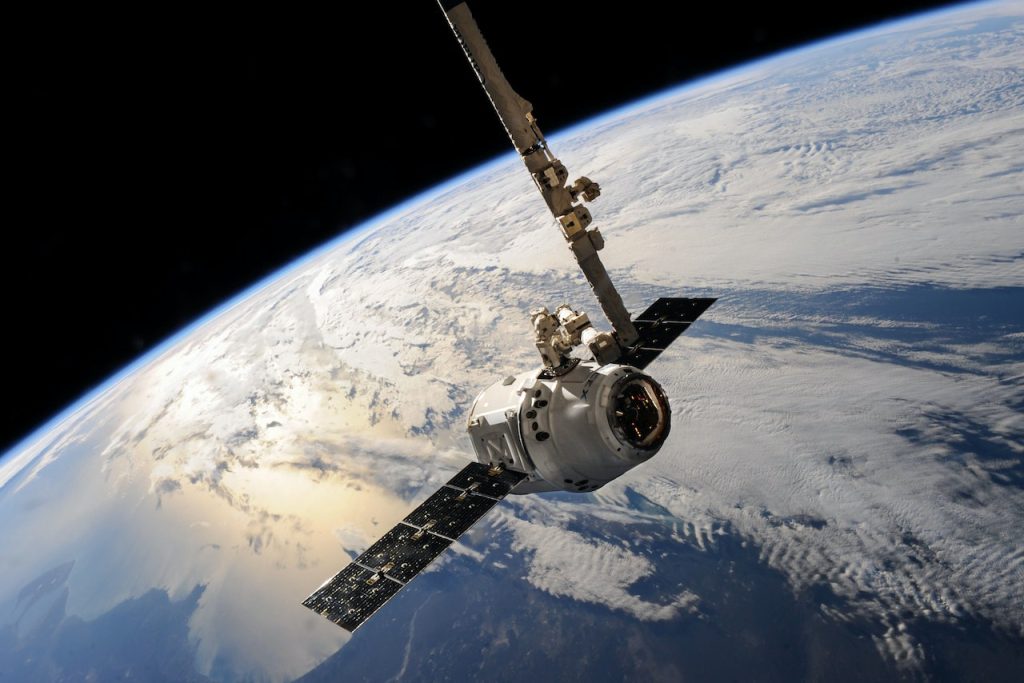Experts predict a $7.0 billion value to the global commercial satellite imaging market by 2027. While satellite communications and navigation sectors are driving hundreds of billion revenues, the Earth observation (EO) market is yet to take a quantum leap toward big money.
It’s largely attributed to the fact that until recently, EO data has been in demand by mainly expert consumers and required serious computing resources for processing. The high price tag was another roadblock on the way. When Landsat and then Sentinel data went into open public use, this was the first step towards the changes. However, people without a GIS background still lacked solutions that would let them convert a satellite capture into applicable information for their field.
To turn satellite imagery into a mass-consumption product, scientific agencies and commercial companies have begun to offer value-added services that allow end users to gain insights from EO data in a digestible form. Dozens of catalogs offering the best free real-time satellite images and integrated analytics have gone live ever since.
What We Can Learn from Satellite Images
Remote sensing technology explains the value of satellite images of Earth. Sensors aboard satellites measure the electromagnetic radiation reflected by objects on the planet. While the human eye can only register reflectance in the visible part of the spectrum, multi- and hyperspectral satellite cameras are capturing dozens to several hundreds of various spectral bands, accordingly.
Combining such spectral measurements with scientific knowledge about how objects react to radiation, we can identify them from space and perform various analyses. For instance, near-infrared and red bands can tell us about the health of plants, while the formula with near-infrared and short-wave infrared can highlight the burned areas.
Top Satellite Data Resources
Today, there are dozens of platforms offering instant assess to satellite pictures of Earth directly in a browser. Some make a better fit for GIS analysts engaged in profound research, while others offer an easy-to-use interface for amateurs.
● USGS EarthExplorer
This free tool by the USGS agency boasts a huge collection of imagery from satellites and aircraft, and DEM. Users can search, view, and save the data on their computers. The satellite data collection features a decades-worth of Landsat image acquisitions, MODIS, as well as ASTER to name a few. Owing to partnerships with governmental organizations and commercial providers, the Sentinel-2, Resourcesat-1 and 2, and high-resolution data sources have been added.
● EOSDA LandViewer
A digital satellite-driven tool by EOS Data Analytics for fast search, visualization, analysis, and downloading of data. The platform hosts a collection of open-access satellite imagery of various spatial, spectral, and temporal resolution: from historical Landsat 4-5 Earth pictures to the most up to date satellite images from Sentinel-2, Landsat 8, CBERS-4, etc. Moreover, it is a source of paid high-resolution data (up to 0.4 m/pixel) from KOMPSAT-2, 3, 3A, Gaofen 1-2, SuperView, etc. What makes it even better is integrated analytics that includes remote sensing indices application, change detection, and time series features. Users can work with 10 free images per day or subscribe to unlock unlimited use.
● Earthdata Search by NASA
A free online hub, which facilitates the search, visualization, and saving of petabytes of Earth sciences data coming from NASA. It serves as a shortcut to years of image acquisitions from ENVISAT, NOAA, Nimbus, CALIPSO, and a multitude of satellite images of Earth or GIS datasets from current or past missions.
● Copernicus Open Access Hub
This software provides pro bono access to all Sentinel datasets and is geared toward developers. Although it offers significantly fewer datasets (only Sentinel-1, 2, 3, and 5P), those looking for recently captured radar and optical satellite pictures, or data applicable to the atmosphere and environmental studies will not be disappointed. To comb through the imagery catalog and save data to a computer, users either need to use API or send text queries.
● Sentinel Hub
Another Sentinel-focused platform that branches into free EO Browser and Sentinel Playground services. It serves data from all existing Sentinel missions, plus most up to date satellite images from Landsat, Proba-V, MODIS, and a few others on top. While EO Browser has got users covered for all cases — data search, preview, analysis, and saving — the Sentinel Playground is an entertaining addition for users who are eager to explore the world from afar and share stunning global mosaic pieces.
● NASA Worldview
An open free platform designed to quickly visualize and download more than 1,000 imagery products within the Global Imagery Browse Services (GIBS) by NASA. Users are able to go back to the past with global historical imagery (e.g., Landsat) or monitor the current state of things with near to live satellite view acquired just hours ago (e.g., NOAA satellite). It’s perfect for weather and disaster monitoring due to almost real time satellite imaging and low spatial resolution.
● Zoom Earth
This tool by neave interactive pulls the freshest satellite and aerial images from GIBS catalogs by NASA and shows them as a zoomable map. Users can get an almost live satellite view from geostationary satellites, including Meteosat (15 minutes frequency), Himawari-8 and GOES (10 minutes frequency), GIBS and EOSDIS (daily frequency), as well as zoom in for a non-live high-resolution view brought by Bing Maps. The platform is mainly used by meteorologists for storm, fire, and precipitation updates.

